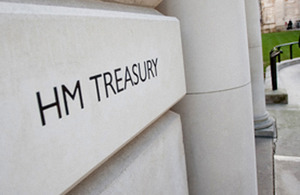Gross Domestic Product (GDP): What it means and why it matters
Gross Domestic Product (GDP) measures if and how much the economy is growing. Here we explain what it actually is and how it’s measured.

The animation below gives a quick introduction to GDP
GDP is the size of the economy at a point in time
GDP measures the total value of all of the goods made, and services provided, during a specific period of time.
Goods are things such as your new washing machine, or the milk that you buy. Services include the haircut from your hairdresser, or repairs done by your plumber.
It’s only final goods and services that are sold to you and me that matter for GDP though. So if some tyres roll off a production line and are sold to a car manufacturer, the value of the tyres isn’t included in GDP, it is reflected in the value of the car.
The amount you pay, or the market value of that good or service, is what’s important as these are added together to get GDP.
Sometimes people use the phrase Real GDP
This is because GDP can be expressed in nominal or real terms. Real GDP takes the value of goods and services produced in the UK, but it takes into account changing prices to remove the effect of rising prices over time, otherwise known as inflation.
Real GDP is otherwise known as the ‘constant price’ measure of GDP.
Nominal GDP still measures the value of all the goods and services produced in the UK, but at the time they are produced.
It is otherwise known as the ‘current price’ measure of GDP.
There’s more than one way of measuring GDP
Just imagine trying to add together the value of everything made in the UK – that’s no easy feat, which is why there is more than one way of measuring GDP.
GDP is calculated three ways, adding up:
- all the money spent on goods and services, minus the value of imports (money spent on goods and services produced outside the UK), plus exports (money spent on UK goods and services in other countries)
- the money earned through wages and profits
- the value of goods and services produced
These are known as the expenditure, income and output measures of GDP, respectively. All three different methods of calculating GDP should, in theory, give the same number.
In the UK, we get a new GDP figure every month
If the GDP figure is higher than it was in the previous month – the economy is growing.
If it’s lower – the economy is getting smaller.
The Office for National Statistics (ONS) is responsible for calculating the GDP figure for the UK. Naturally it collects a lot of data from a lot of different sources to do this. It surveys tens of thousands of UK firms working in manufacturing, services, retail and construction, as well as using a wealth of administrative data.
Monthly GDP is calculated only using the output measure (the value of goods and services produced) and the changes from month to month can be quite large. So, the ONS also produces an estimate of GDP over 3 months, where it compares data to the previous 3 months. This provides a more reliable picture of how the economy is performing, and it includes data from each of the expenditure, income and output measures.
You might have heard people refer to the first or second estimate of GDP
For the first estimate of each quarter, the ONS has not gathered all the information it needs – so this can be revised at the second estimate. At the first estimate, the ONS has gathered around half of the data it needs across the expenditure, income and output measures.
GDP can also be revised at a later date due to changes in the methods for estimating it, or to incorporate less frequent data.
GDP matters because it shows how healthy the economy is
Rising GDP means the economy is growing, and the resources available to people in the country – goods and services, wages and profits – are increasing.
Updates to this page
-
Updated with 'What is GDP?' animation.
-
Updated to clarify role of exports and imports in calculating GDP
-
First published.